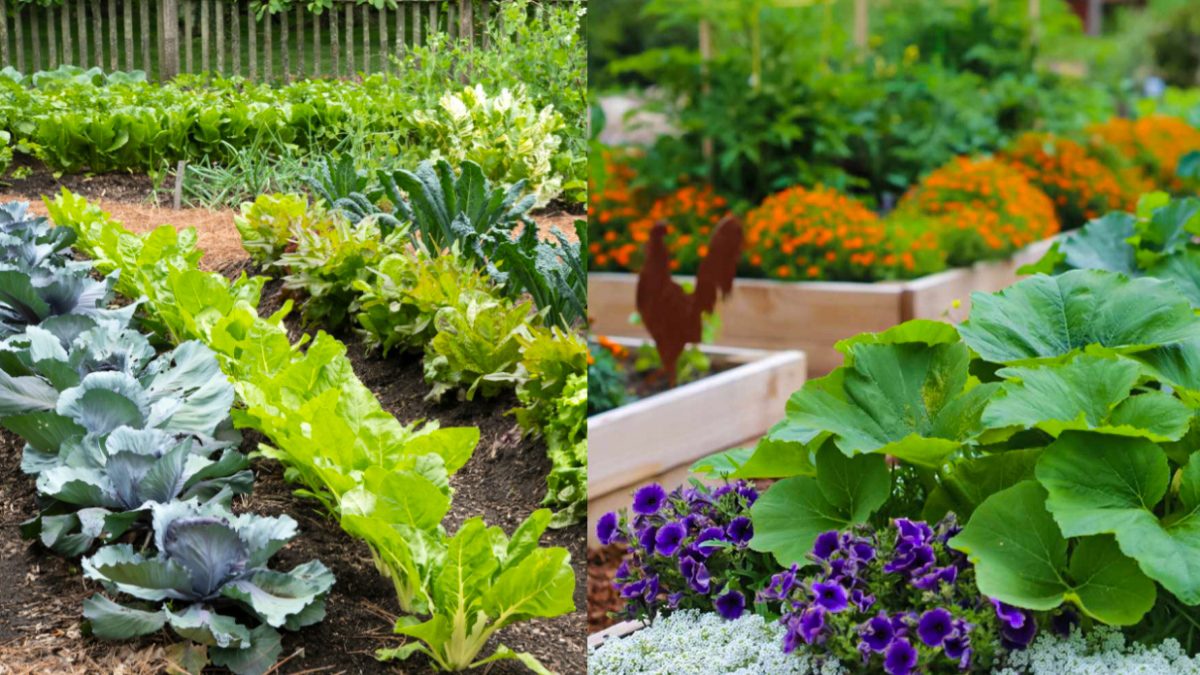Want to enjoy homegrown veggies without a backyard? Good news — you don’t need one! Indoor vegetable gardening is the perfect way to grow fresh, organic produce all year round, even in small apartments or urban homes. Whether you’re a total newbie or a green-thumb-in-training, this guide will walk you through everything you need to know to start your indoor vegetable garden today.
🪴 Why Start an Indoor Vegetable Garden?
Indoor gardening is more than just a hobby — it’s a lifestyle. Here’s why people love it:
- ✅ Year-round access to fresh vegetables
- ✅ Saves money on grocery bills
- ✅ No need for outdoor space
- ✅ Pesticide-free, organic produce
- ✅ Stress-reducing and therapeutic
Plus, it’s a great way to teach kids about nature, responsibility, and healthy eating!
🧰 What You Need to Get Started
You don’t need fancy gear to begin. Here’s your essential indoor vegetable garden starter kit:
✅ Containers or Pots
Choose containers with proper drainage. You can use:
- Plastic or ceramic pots
- Fabric grow bags
- Recycled containers (just drill holes!)
✅ Quality Potting Mix
Skip garden soil — it’s too dense for containers. Instead, choose a lightweight, organic potting mix designed for vegetables.
✅ Grow Lights (Optional but Recommended)
If your home lacks bright sunlight, LED grow lights can mimic the sun’s spectrum and help your plants thrive indoors.
✅ Watering Tools
A watering can with a long spout or a spray bottle is ideal. Avoid overwatering — soggy roots lead to disease.
✅ Fertilizer
Use organic, water-soluble vegetable fertilizers every few weeks to boost growth.
🥕 Best Vegetables to Grow Indoors
Not all veggies thrive inside — but these are the top picks for beginners:
🥬 Leafy Greens
- Lettuce
- Spinach
- Kale
- Swiss chard
🌱 Grow fast and can be harvested multiple times.
🧅 Green Onions & Garlic Greens
- Regrow from kitchen scraps
- Need minimal space
- Perfect for sunny windowsills
🥕 Radishes
- Quick growers (20–30 days)
- Compact root system
🫑 Peppers (Mini Varieties)
- Need warmth and light
- Great for containers
🍅 Cherry Tomatoes
- Choose dwarf or determinate varieties
- Require support and sunlight (or grow lights)
🫘 Bush Beans
- Space-efficient and productive
- Add nitrogen to the soil
🌱 Step-by-Step Guide to Starting Your Indoor Garden
1. Pick the Right Location
Look for a south-facing window that gets at least 6 hours of light daily. No sun? No problem — set up LED grow lights 12–16 inches above the plants.
2. Choose Your Vegetables
Start with fast-growing, low-maintenance varieties like leafy greens or herbs.
3. Prepare the Containers
- Ensure proper drainage
- Fill with moistened potting mix
- Leave about 1 inch at the top
4. Sow the Seeds
- Follow packet instructions for spacing and depth
- Lightly cover with soil and water gently
5. Maintain Proper Conditions
- Keep temperature between 65–75°F (18–24°C)
- Use a fan to ensure airflow and prevent mold
- Rotate containers to ensure even light
6. Water & Feed
- Water when the top inch of soil feels dry
- Fertilize every 2–4 weeks with a balanced organic feed
7. Harvest Regularly
Snip outer leaves first (for leafy greens) to encourage regrowth.
☀️ Light, Water & Soil: The Key Growth Factors
💡 Lighting
- Natural sunlight is ideal (south-facing windows)
- Use full-spectrum LED grow lights if sunlight is limited
- 12–16 hours of light per day is ideal for fruiting vegetables
💧 Watering Tips
- Use the finger test to check soil moisture
- Avoid letting water sit in trays
- Use room-temperature water
🌱 Soil & Drainage
- Use light, well-draining potting mix
- Add perlite or coconut coir to improve aeration
- Always check for clogged drainage holes
❌ Common Mistakes to Avoid
- Overwatering – More plants die from too much water than too little.
- Poor Lighting – Stretchy, leggy plants are a sign of low light.
- Skipping Fertilizer – Soil nutrients get used up quickly indoors.
- Crowding Plants – Each plant needs its own space to grow.
- Ignoring Pests – Indoor pests like aphids and fungus gnats can sneak in.
🛠️ Maintenance Tips for Healthy Plants
- 🍂 Prune yellowing leaves to prevent disease.
- 🧼 Clean your containers regularly to stop mold and bacteria.
- 🔄 Rotate your plants weekly for even growth.
- 🐞 Use neem oil or insecticidal soap if pests appear.
- 🌬️ Ensure air circulation with an open window or fan.
🙋♀️ Indoor Gardening FAQs
Can I really grow vegetables indoors without sunlight?
Yes, but you’ll need LED grow lights to mimic the full light spectrum that plants need.
What are the easiest vegetables to grow inside?
Leafy greens like spinach, lettuce, and microgreens are great starters. Green onions and radishes are also very beginner-friendly.
How often should I water my indoor vegetables?
Depends on the plant and environment. Check soil moisture regularly — water only when the top inch is dry.
Do I need to pollinate indoor vegetables manually?
For fruiting vegetables like tomatoes and peppers, yes. Use a soft brush or gently shake the plant to move pollen around.
🧩 Bonus Tips: Go Beyond the Basics
- 🧺 Create a veggie rotation schedule to keep your harvest going all year.
- 🧊 Use reflective surfaces (like white walls or foil) to boost light exposure.
- 📱 Use plant care apps like Planta or Gardenate for reminders and tips.
- 📦 Join seed subscription boxes for fun and variety!
📥 Get Started Today!
Don’t wait for the perfect moment. All you need is a little space, a sunny window, and some enthusiasm. Starting your indoor vegetable garden today means you’ll be harvesting your own fresh, nutritious produce in no time — even if it’s snowing outside!
✍️ Final Thoughts
Indoor vegetable gardening is fun, sustainable, and surprisingly simple. With the right setup and a bit of patience, you can enjoy fresh produce from your windowsill or kitchen counter all year long. Whether you’re growing lettuce in a jar or tomatoes in a pot, every step brings you closer to self-sufficiency and better health.
So go on — start your indoor vegetable garden today and let your green journey begin!

